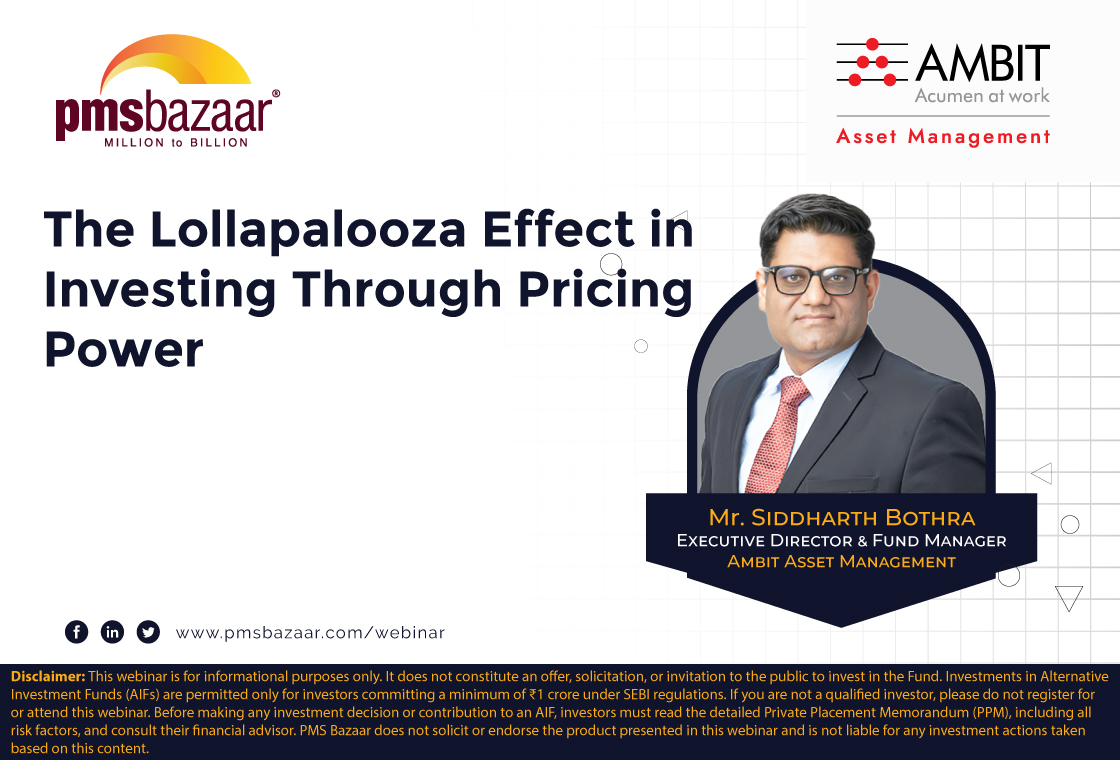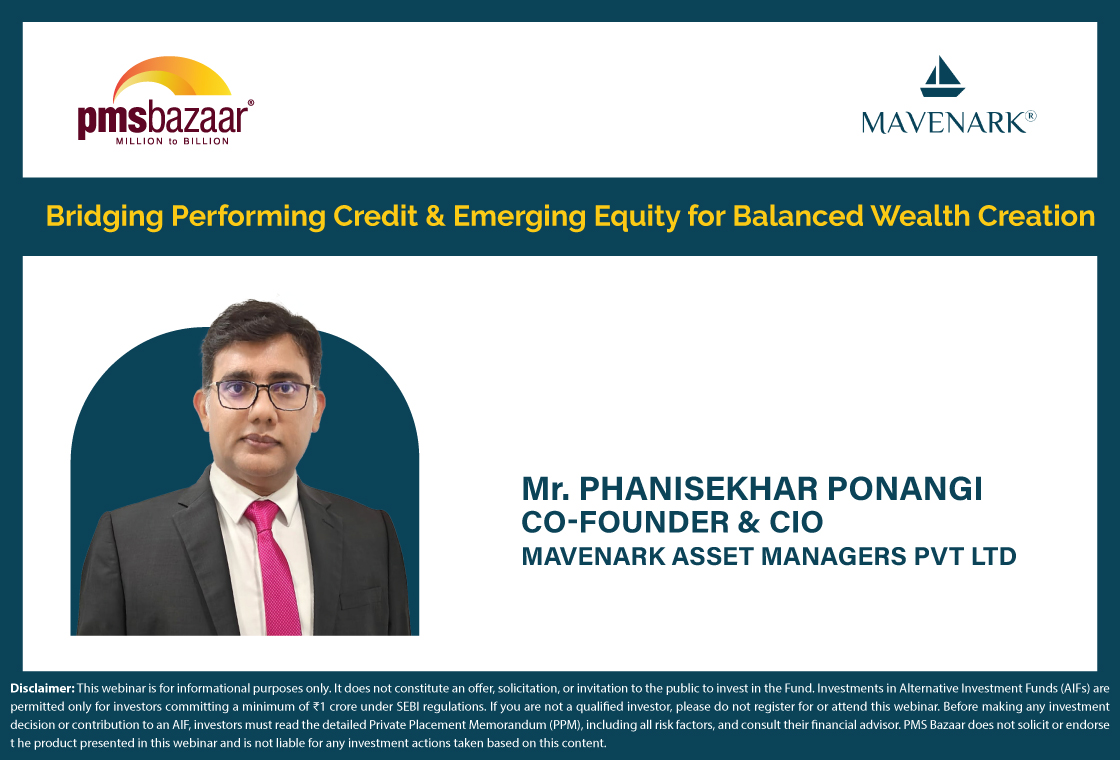In alternative investments, the quant strategy has the potential to generate sustainable returns with its dynamic asset allocation and risk mitigation measures, eliminating emotional bias. But did you know? In India, less than 1% of assets are managed through quant, while it is 35% in the US. Read to understand about a style-agnostic quant PMS strategy that generates superior risk-adjusted returns.

PMS Bazaar conducted its second edition of the Dubai Alternative Investment Summit (DAIS) on February 17, 2024. As part of this event, the company invited various industry experts to share their insights on the Indian alternative industry. One such expert, Siddharth Vora, Fund Manager, Head of Quant Investment Strategies & Executive Director, Prabhudas Lilladher, presented the potential of generating consistent returns quant strategy in the alternative investment. His topic on the event day was: Investing in India using quant strategies for sustainable alpha.
Siddharth Vora presented opened his
presentation with a glimpse into Prabhudas Lilladher's 80-year legacy in the financial
services industry which included multiple businesses including investment
banking, wealth management, asset management, trading and broking,
institutional equities and NBFCs. He then briefly highlighted India's economic
growth and potential to become the third-largest economy by 2028.
Next big thing: Quant investment strategies
Vora emphasised the strong
correlation between economic trends and market performance, suggesting it is an
opportune market for investment strategies that adapt to these changes. He added
that his company follows a quantitative investment approach – a
man-with-machine approach. He highlighted the underutilisation of quant
strategies in India, with less than 1% of assets managed through this approach while
99% of the assets are managed via active and passive. In comparison, in the US,
35% of the assets are managed by quant strategies and the rest are in active
and passive investment approaches.
Vora positioned quant as the next
big thing with active investing slowly fading out. He believed quant offers
several advantages, including eliminating emotional biases, employing rigorous analytics,
and testing, ensuring complete transparency, enhancing risk management, and
enabling efficient data processing. He underscored the need for adaptive
investment strategies, given that different market styles and cycles require
flexibility.
Vora then explained Prabhudas
Lilladher's SMART philosophy (Systematic Design, Measurable performance,
Adaptive Models, Repeatable Alpha, and Transparent Attribution) that underpins
their quant strategies.
PL’s quant strategy: AQUA
He introduced the AQUA strategy that
dynamically allocates investments across growth, value, and quality styles
based on prevailing market regimes. This is based on three risk zones (risk-on,
risk-transition and risk-off) which focus on different investing styles such as
growth, momentum, high beta investing, value, quality, low volatility, and dividend
across market-cap depending on the risk phases. The AQUA strategy invests in a
flexi-cap universe (across large, mid and small-cap categories) of top 500 stocks,
with multiple filters and then builds a portfolio of 25-30 stocks with
individual weight capped at 4%.
Vora also stated the stringent
measures in place to mitigate risks detailing that the strategy excludes
illiquid stocks, employs multiple fundamental filters to screen companies with
sound financial health, periodic rebalancing (every 2 months), diversification
and more.
He concluded his presentation by showcasing
data on AQUA's outperformance against benchmark indices across various
timeframes and ended his speech by reiterating the advantages of investing in
quantitative strategies like AQUA.
Watch the entire presentation to understand more about the quantitative investment strategy of Prabhudas Lilladher for investing in Indian alternative assets.
Get access to rich data and analytics of PMS & AIF by subscribing to us. Join the 60000+ investors & experts now: Subscribe NOW
Recent Blogs

The Accreditation Edge: Unlocking the Power of Accredited Investors to make Diversified Investments
PMS Bazaar recently organized a webinar titled “The Accreditation Edge: Unlocking the Power of Accredited Investors to make Diversified Investments,” which featured Mr. Archit Lohia, Founder and CEO of Career Topper Online Education Pvt. Ltd. This blog covers the important points shared in this insightful webinar.

PMS performance hit by broad market slump in July; Thematic strategies buck the trend
Of 427 equity PMSes, only 61 gained; Debt offerings showed positive returns. July 2025 proved to be a testing month for Portfolio Management Services (PMS) investors, with broad-based declines across most asset classes.

July tests AIF resilience; Long-short strategies lead relative gains game
Only 44 of 137 AIFs ended positive; long-only funds averaged –1.15%, while long-short peers limited losses to –0.29%

The Lollapalooza Effect in Investing Through Pricing Power
PMS Bazaar recently organized a webinar titled “The Lollapalooza Effect in Investing Through Pricing Power” which featured Mr. Siddharth Bothra, Executive Director and Fund Manager, Ambit Asset Management. This blog covers the important points shared in this insightful webinar.

The Secret Sauce of Quant PMS
PMS Bazaar recently organized a webinar titled “The Secret Sauce of Quant PMS,” which featured Mr. Vivek Sharma, VP & Investment Head, Estee Advisors Private Limited.

Bridging Performing Credit and Emerging Equity for Balanced Wealth Creation
PMS Bazaar recently organized a webinar titled “Bridging Performing Credit and Emerging Equity for Balanced Wealth Creation,” which featured Mr. Phanisekhar Ponangi, Co-Founder and CIO, MavenArk Asset Managers Pvt Limited. This blog covers the important points shared in this insightful webinar.

Equity PMS performance steady in June; over 99% in green as rally broadens
Best schemes log 10-19% gains, but the overall extent of outperformance vs. benchmarks was lower compared to May

June Brings Steady Gains for AIFs; Long-Only Strategies Maintain Lead
126 of 129 AIFs ended in the green; long-only funds averaged 3.75%, while long-short peers delivered a modest 2.18%

